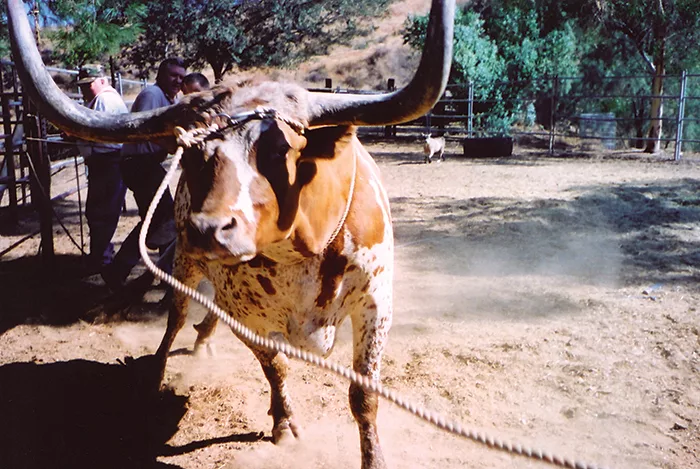American Farriers Journal
American Farriers Journal is the “hands-on” magazine for professional farriers, equine veterinarians and horse care product and service buyers.

FIGURE 1. Enough slack needs to be left in the head rope so that the head will not be held up in the air when the animal is lying down.
Many farriers have been called on from time to time to trim or shoe bovine feet. Show cattle, milk cows, bulls, oxen, family pets or other herd members are all possible candidates. Without cattle handling experience, this can be very difficult or next to impossible.
Trimming dairy cows is a whole different business. Professional trimmers have their own portable chutes mounted onto trucks or trailers. They have power equipment and special tools to make production work easy. They are good at their profession. In Japan, two-thirds of the farriers’ associations are “cow claw” trimmers. But how do we handle a big steer without all that specialized equipment?
We have trimmed only one bovine on which we could pick up all four feet as we would expect to do with a horse.
Our objective here is to show how we would lay a bovine down and control it to trim its feet.
Tie the head to a big, solid post, leaving enough slack — say 5 or 6 feet — so that when the animal is down, the head is not up in the air (Figure 1). The animal needs to lay flat on its side with plenty of clearance for working room all around. A 1,600-pound bovine can snap or break a rope with a shake…